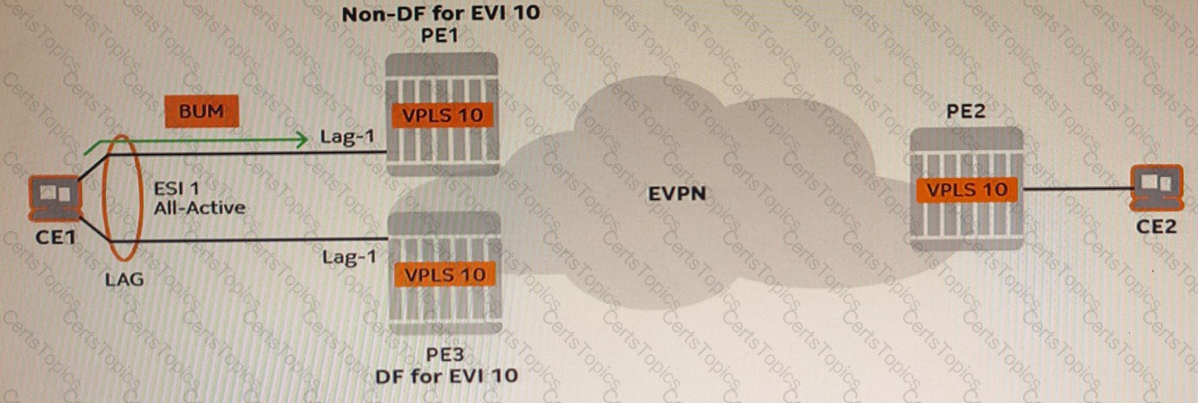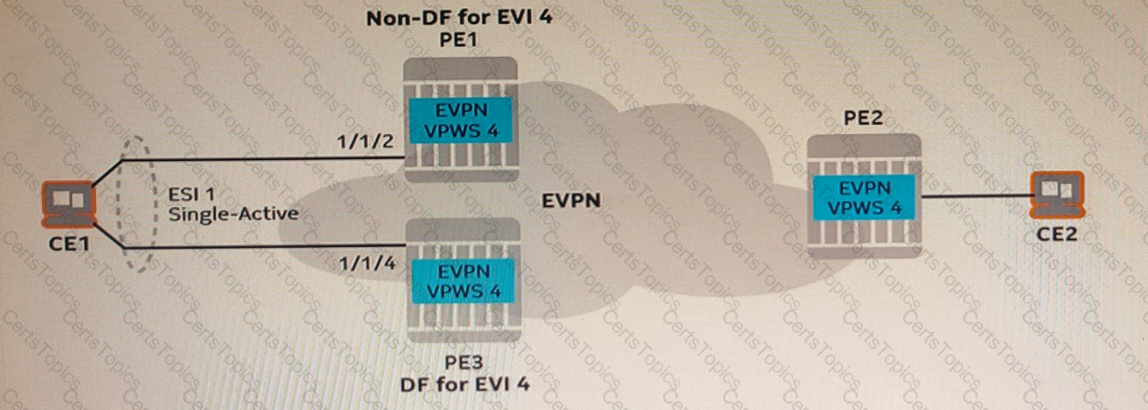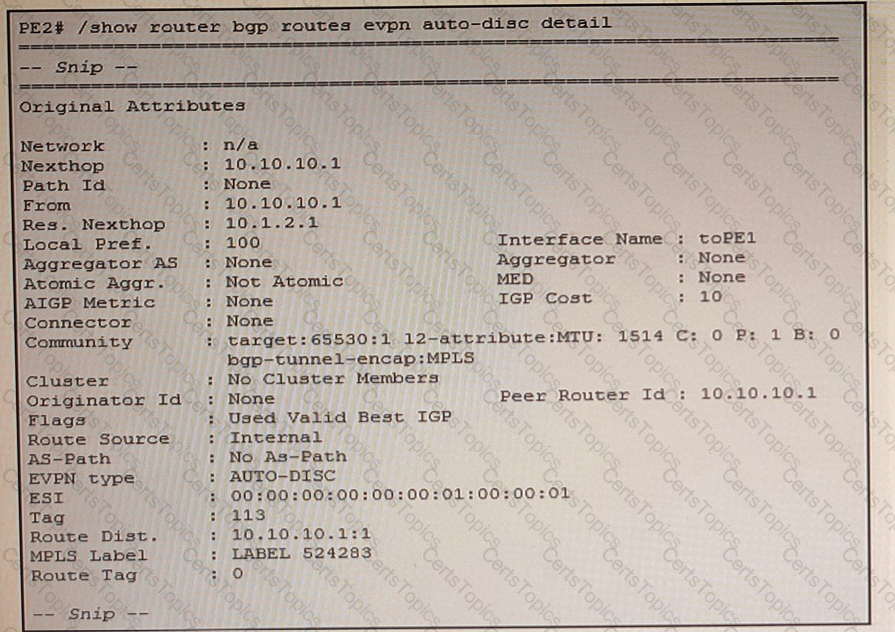Which of the following statements about the operation of a single-homed EVPN VPWS is TRUE?
An operator configures an EVPN-IRB that uses the interface-ful unnumbered forwarding model on a Nokia 7750 service router. Which ofthe following statements regarding the configuration performed on each participating PE is FALSE?
A Layer-3 EVPN service is configured to use the interface-ful unnumbered forwarding model. Which of the following statements isFALSE?
Examine the exhibit.

Which of the following actions is performed by PEI after it receives a BUM packet from CEI?
Which of the following best describes the operation of a non-designated forwarder (non-DF) in a single-active Ethernet segment?
Which of the following statements about the EVPN route types used to support multi-homing is TRUE?
Examine the exhibit.

Which of the following statements about the operation of EVPN VPWS 4 is FALSE?
The interface-ful numbered model is used for a Layer-3 EVPN service. Which of the following statements is FALSE?
Which of the following statements about EVPN auto-discovery per Ethernet segment (A-D per ES) routes is TRUE?
Which of the following statements about PE-to-PE MAC address advertisement is FALSE?
In the exhibit, PE2 is receiving an EVPN auto-discovery (A-D) route from PEI. Based on the output, which of the following statements is FALSE?
